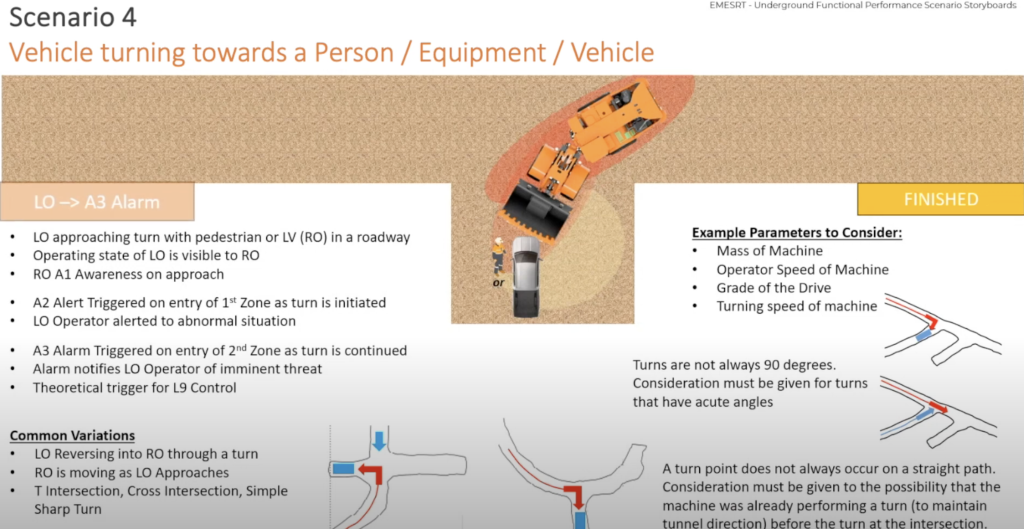Underground scenario storyboards ready for industry use
The EMESRT Advisory Group is pleased to announce the launch of the underground functional performance scenario storyboards.
What are scenario storyboards?
The storyboard approach was first developed for surface mining by an EMESRT member company in 2019 to assist with articulating to designers of Proximity Detection Systems (PDS), the functional performance requirements of specific fatal scenarios encountered in a surface mining operational area.
The functional performance scenario storyboards provide a visual and dynamic reference for equipment operators, PDS suppliers, and vehicle interaction improvement project managers as they implement vehicle intervention controls.
An EMESRT underground functional performance scenario storyboard development working group was established in mid-2023, with Adam Ferris, Glencore’s Zinc engineering manager playing a lead role in the group.
Using the EMESRT process of clearly understanding and defining the industry-wide problem to be addressed from the perspective of mining equipment users, the working group prepared a draft set of fatal consequence scenarios storyboards.
The draft set of scenario storyboards was presented to the EMESRT vehicle interaction working group in late 2023, resulting in alignment and improvement suggestions on format and content.
Adam Ferris said the sub-group aimed to distil the essence of the problems encountered underground, both from the standpoint of collisions and certain technology sensing constraint issues — agnostic of supplier, with focus on how various sensing technology generates false or unsuccessful alarms under certain operating conditions or ore body types.
Functional Performance Requirement Objectives
The objective is to prevent a person or vehicle causing a Potential Unwanted Event (PUE) in the following three PUE categories resulting in injury or equipment damage:
- Vehicle to Person
- Vehicle to Vehicle
- Vehicle to Equipment or Environment
There are five underground scenario storyboards, including several failure modes, focusing on:
- Pedestrian approaching static Vehicle
- Vehicle moving towards a Person / Equipment / Vehicle
- Two vehicles approaching each other
- Vehicle turning towards a Person / Equipment / Vehicle
- Vehicle approaching Environment hazard

Image: Scenario 4 animated PowerPoint slide.
“Developing the scenario storyboards has been quite a body of work that started mid-last year; with several iterations and numerous global industry consultations, they are now ready for industry use.
“The underground scenario storyboards are similar in concept to the surface ones, but there is more variability in the failure modes for each of the underground scenarios that create complexity.
“The opportunity to review the surface scenario storyboards and Performance Requirement 5A presented itself as the underground scenario storyboards were being developed. The review process is progressing and should be finished in the next few months. The intent is to update the documents, discuss the changes with the vehicle interaction working group, gain EMESRT advisory group approval, and publish the revised versions,” said Tony Egan, EMESRT Advisory Group member and Glencore representative.
EMESRT wishes to thank Adam and the sub-group for their expertise, time and commitment in developing the scenario storyboards.
The scenario storyboards are available as animated PowerPoint presentations and MP4 videos, both as a compilation (1-5) and individual scenario storyboards. They can be accessed via the EMESRT website scenario storyboards landing page – emesrt.org.
For more information regarding the scenario storyboards, please send an email to enquiries@emesrt.org.

